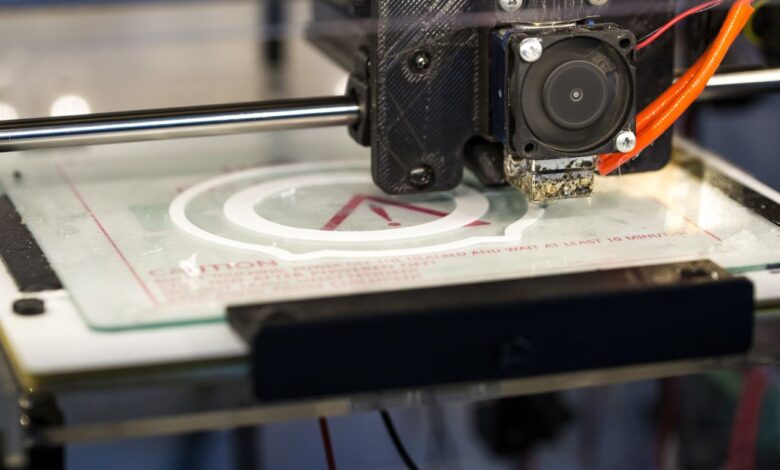Understanding the Basics of Design for Manufacturing Principles

When creating a new product and production run, one of your most important tasks is ensuring your design is suitable for manufacturing. Otherwise, you can get stuck with a product that looks good in sketches but can never be created and shipped.
A lack of a manufacturing principles understanding might not lead to a real-world disaster. But it can do long-term harm to your company. So what exactly are the basics of design for manufacturing? How can you avoid mistakes and failures in the future?
Read on to learn everything you need to know about how design for manufacturing works.
What is Design for Manufacturing?
Design for manufacturing is a process-based approach to designing products. It incorporates materials, processes, and production methods. It will ensure the manufacturing of the product are efficiently and cost-effectively.
It follows principles related to the product development process. It reduces the potential for costly design changes and modifications.
Three Core Principles of DFM
It is based on three core principles:
- Design for manufacturability
- Design for speed
- Design for serviceability
Understanding the core principles of DFM can save designers time and money. It can also create high-quality products to please customers.
Design for Manufacturability
The designer looks at the entire manufacturing process. It ensures the product can be produced in the most cost-effective method possible.
It involves taking a look at the means of production. It understands the individual components and processes needed for production.
Design for Speed
It focuses on shortening the design process to get the product to the client faster. It refers to how designers can cut the need for high levels of iteration due to changes in design.
It includes ensuring that the designed part has simple features with minor complexity. It will ensure they are on time during the manufacturing process.
- It also evaluates the design elements considering how fast they can be produced. For example, they use flat shapes and avoid curves and complicated angles.
Simplifying assembly processes and minimizing material usage is also essential in using speed in design. Adhering to the design for speed will help designers ensure the product gets to the customer quickly.
Design for Serviceability
It is a principle that focuses on the long-term serviceability of a product or service. It considers serviceability and maintenance requirements for a product or service upfront. Organizations can then reduce the cost of ownership.
This principle aims to enable experienced personnel to perform maintenance and service on the product with minimal downtime and reduced cost. It includes considerations for component standardization and accessibility.
It also considers the extra parts for a replacement ahead of time. It also encompasses ergonomics and safety features. It ensures the maintenance personnel can perform the required tasks safely.
Common Approaches and Techniques
Common approaches and techniques involve modular design, finite element analysis, and process integration. Modular design reduces complexity by breaking down components into smaller, more manageable pieces. It makes it easier to assemble and test them.
FEA uses mathematics to calculate parameters such as force, stress, strain, and motion. It helps to identify areas where components need reinforcement or optimization.
Process integration examines the entire process from design to manufacture. It ensures the most effective and efficient workflows are used while factorizing costs.
With these techniques, DFM principles allow designers to create more cost-effective and efficient products. It helps by reducing complexity, optimizing design, and ensuring efficient manufacturing processes.
Application in Different Industries
It can be applied in almost any industry. It has been used to improve the design and production of car parts, medical devices, consumer electronics, and much more. In each case, DFM seeks to address the industry’s specific needs.
It takes into account the size, complexity, and specific production process. Manufacturers can enhance their production process by understanding and applying the basic principles of DFM. For reference, you can get more info at motionsolutions.com.
Benefits of DFM
The benefits of DFM include:
- Increased production yield
- Streamlined processes
- Improved use of materials
- Cost savings
- Improved profitability
- Improved design of products
- Better use of labor and equipment
- Reducing manufacturing risks
- Risk evaluation for process capability
- Ensuring parts remain without defect
Through DFM, designers learn to design with a production goal in mind. It helps ensure products meet all cost and delivery requirements. Consider the whole manufacturing process and its associated cost. Designers can create a product that meets all the necessities while providing cost savings.
Companies should consider the design principles of DFM. They can improve efficiencies and reduce manufacturing costs while meeting customer needs.
Basic Steps
The basic steps include:
- Understanding the materials being used
- The tools which will be operating on them
- The processes for manufacturing
- Understanding the resources used to produce the parts
A good DFM should reduce the number of processes and steps to cut costs and reduce waste. Optimize the design to ensure safety, reliability, and ease of maintenance. These basic steps can result in improved time-to-market periods and a successful product launch.
Implementation of the Principles
Implementing DFM principles is essential for effective and efficient product design. Adopting these principles in design can help reduce extra costs due to revisions, labor costs, and changes in production.
By applying the principles, manufacturers can produce the same product faster, make fewer mistakes, and reduce costs. It also allows for better quality products that are fastly delivered.
Understand the Design for Manufacturing
Design for manufacturing principles is essential for businesses. Even manufacturers are looking to create products with efficiency and cost-effectiveness. Understanding the basics can help save time, reduce errors, and develop products that meet expectations.
Learning the concepts can go a long way. It can help in becoming and staying competitive in the manufacturing industry. So don’t wait – take a step today to explore design for manufacturing principles more in-depth.
Did you find this information helpful? If you did, check out the rest of our site for more informative articles.



